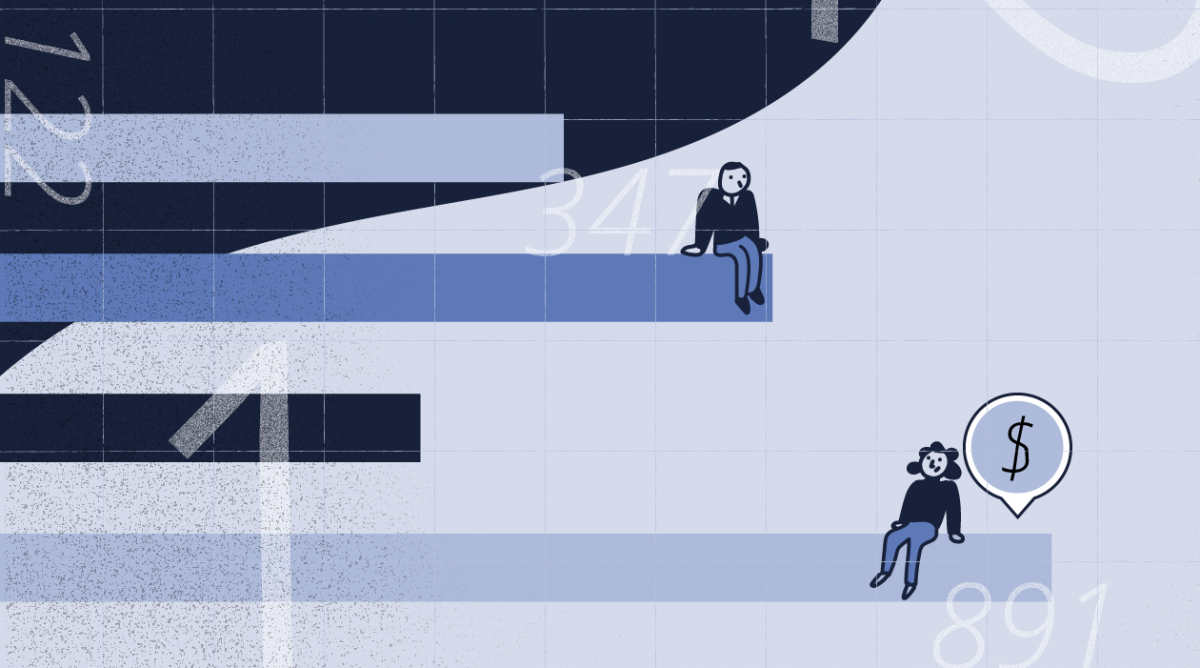If you’re part of the gig economy, you probably have tons of questions on your mind on how to price your services. Whether you are working for another company or handling clients on your own, you have to determine a gig pricing model that works best for you.
Working as a freelancer involves many extra steps not involved with traditional work arrangements. But while comparing salaries or wage rates for 9 to 5 jobs is easier, being able to set your own rates provides many important advantages. Being able to reduce your rates during slow times and raise them during busy periods allows you to maximize your earnings and quickly adjust to market conditions.
It also allows you to better reflect increases in your experience and education levels. Raising your prices is easy and better reflects the increased value you provide to clients.
Gig Pricing Model: Why Should You Know About It
Pricing plays a vital role in the life of gig workers. Getting this right is very important, and it’s one of the most crucial decisions you have to make in the early stages of your career as a gig worker.
Despite this, many people who work in the industry usually play guessing games with their pricing model at the start of their careers. This often undervalues your time and effort and can even drive clients away.
What Factors Affect The Gig Pricing Model?
When you submit your gig pricing model to a client, you are not only sharing an amount but also telling them how much value you can provide to their company, how you view your labor, and the kind of work you offer. This is why it is important to develop an effective pricing strategy because it is more than simply a reflection of dollars and cents.
Your gig pricing model says a lot about you and your work. For instance, charging a premium price is great if you can deliver top-notch results. On the other hand, charging a lower price is fine if the value you are expected to deliver is clear and needs minimal effort on your part.
On top of this, you also have to factor in what your chosen gig pricing model does to sustain you and your lifestyle. Think about all the important factors that get included in your price, such as your experience, paying taxes, processing and admin fees, and time spent communicating with your clients.
You also have to factor in work-related elements, which include your deliverables, the scope and quality of your work, and how fast the client wants their project completed. Other work-related factors include the standard pricing in your industry as well as the complexity of the project.
Keep in mind that just because a task is easy for you does not mean it’s that way for everyone. If it’s easy for all professionals in your niche, consider it as an easy project. But remember that this is not often the case. After all, there’s a reason the client is asking for your help. So don’t discount your work.
Different Strategies Worth Trying
Here are common gig pricing model strategies you can use. You can choose different models for different clients. With experience, you will learn what strategies work best for you, your industry, and your clients.
Hourly Rate
This rate involves you charging clients for each hour of work. This means you will be trading your time for dollars. The longer you work, the more money you will make.
For a real-life example of this model, let’s take a look at the work of a website designer in which a client agrees to pay the average $75 per hour fee. For a project that will take two weeks to complete at 10 hours per week, its total would be $1,500. This strategy works in a similar way to the traditional 9 to 5 setup.
And this type of rate is very common for gig workers around the world. Not only are clients very familiar with this gig pricing model, but they are also comfortable with it. Charging an hourly rate is great if you are working with a project with loosely defined details and if you think the scope and amount of work are going to change during the work process.
However, there are also disadvantages to this model. For instance, you will have limited earning potential because there are only limited billable hours per month. Eventually, you may hit a ceiling where you will find it hard to increase your income any further. You are also in charge of tracking your work hours, and you can earn less if you work fast. This can pose counterproductive motivational forces on your productivity and on client satisfaction.

Daily Rate
Using a daily rate involves you charging clients daily, assuming that you work 6 to 8 hours a day. Daily rates are very common for gig workers who are commissioned by large companies.
An example of this gig pricing model is when you are working as a construction worker for 8 hours a day, with a $130 daily rate. The client does not expect you to record your accomplishments every hour, but they still expect you to get the job done per day at a total pay of $130.
For this type of gig pricing model, the client will be more focused on the task you will complete instead of the hours you put in. It is also simpler for clients to calculate costs for a total project.
However, just like hourly rates, you will also have a limited earning potential since you only have a maximum of 365 days to work each year.
Weekly Rate
Just like the two rates mentioned above, a weekly rate involves you billing clients for a specific time frame. The weekly rate assumes that you will be working full time for the week, which is around 35 to 40 hours. You may also bill two or more clients your weekly rate for fewer hours over the span of 7 days.
One example of this gig pricing model is when you own a vacation rental home such as an Airbnb, and you have a rate listed of $550 per week. The renter is set to stay for two weeks, and they would still get charged even if they do not stay in your Airbnb for a few days during their booking. And it doesn’t matter which day of the week they arrive. The first day of the week corresponds with their arrival.
This rate focuses on the results of the project. And clients do not usually care about the number of hours you put in as long as the outcome is finished. There is also very little tracking involved, and the calculation is simpler for all parties involved. Weekly rates also allow gig workers to charge higher rates for the increased time commitment. It is a great gig pricing model for long-term projects.
Just like the time-based pricing models, you will have limited earning potential, and clients may be disappointed if you need additional time to finish the project than mutually agreed at the early stages of the project.
Monthly Retainer
For this gig pricing model, the client will pay a fixed amount of money to retain your availability for the time being whether or not they need your services. This rate should be paid upfront as soon as clients book you.
If you go with this payment strategy, the client may focus on tasks that need to be completed instead of the hours you spend working. It is also very easy to renew, and this is why it’s a common pricing method for long-term professional relationships.
One example of this payment strategy is when a clothing company needs a designer for clothes from January to March. You agree to a retainer of $6,200 per month for 20 hours of availability per week. Then, the client likes your work and agrees to extend your contract until June.
Monthly retainers allow you to have a predictable income, which is great working as a freelancer. The major disadvantage of this gig pricing model is some clients are not comfortable with paying you just to retain your availability.
Value-Based
Instead of charging for your project inputs, this gig pricing model involves charging an amount based on the value you create for your clients.
For example, imagine you are commissioned to prepare an e-book on gardening, which the client will sell for $5. You estimate that your client will sell 5,000 books based on your previous experience. So if you charge $2,500, your client would still make money.
The rule of thumb is to price your rate at least 10 percent of the projected value. This pricing strategy will allow you to have a higher earning potential, but it is more volatile than other models.
Fixed Fee
For this model, you need to set a price for fixed work. This amount depends on the amount of time and effort it takes to complete a project. Fixed fee projects are great because it eliminates time-based factors in billing, and it also gives clients the security of knowing that your rate won’t change regardless of how long you take to finish the work.
But be aware that there is a limit on how much you will be paid by clients. So make sure you don’t underestimate the complexity of the project.
The longer it will take you to complete the project, the lower your hourly rate will be. There is also a need for you to clearly define any changes and revisions, or else clients may be disappointed in the time it takes for you to finish the project.
What Gig Pricing Model Do You Want to Follow?
A gig worker faces many complex challenges not associated with 9 to 5 jobs. One of these unique areas includes pricing your time and effort. You can opt for an hourly, daily, weekly, or even monthly gig pricing model, depending on your project. In other cases, a value-based pricing strategy of a fixed fee may be more appropriate. Some jobs work better with specific strategies, while other jobs are more open to your preferred pricing model. With experience, you will be better able to match your gig pricing model to individual projects.










